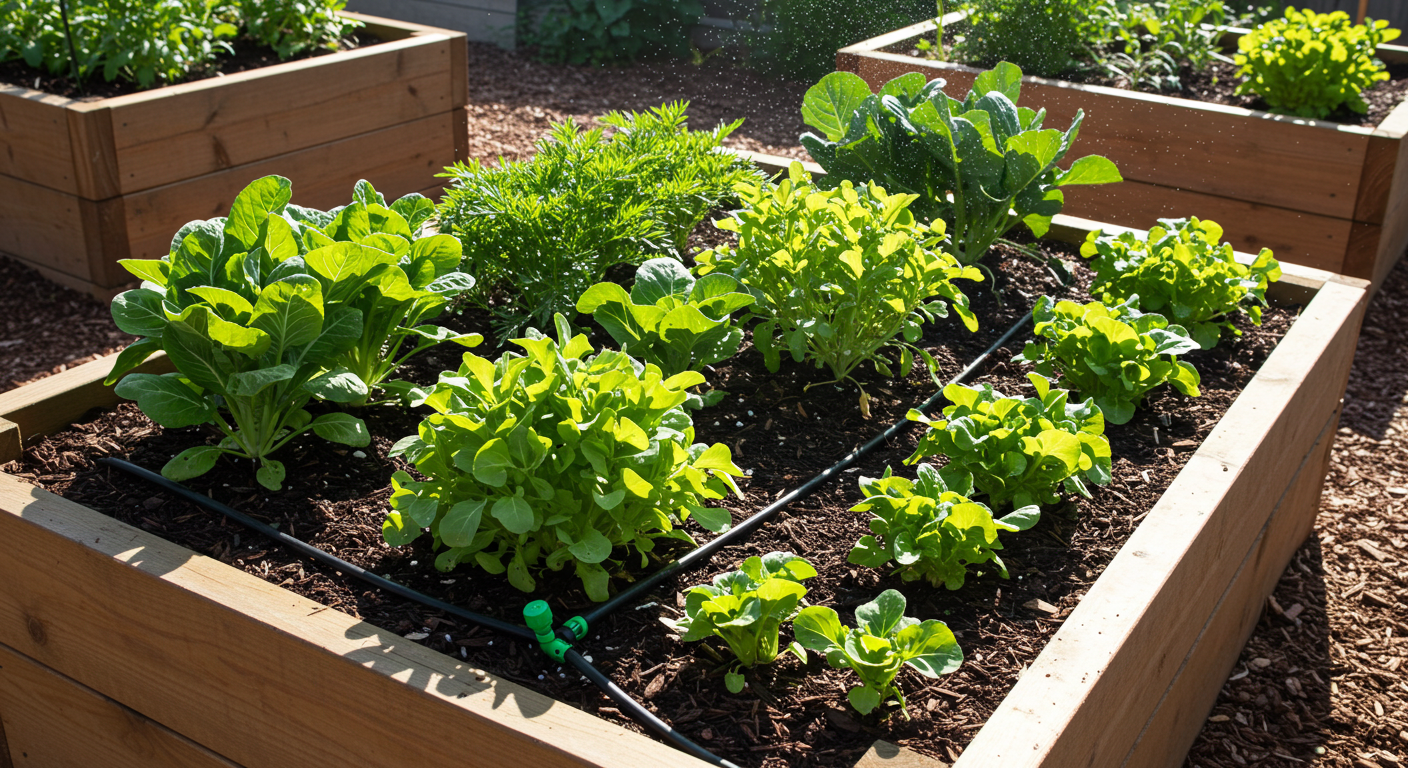
Raised bed gardening has become one of the most popular ways to grow vegetables, herbs, and flowers. By elevating the soil, gardeners gain better control over soil quality, drainage, and weed prevention. However, raised beds also bring one major challenge: watering.
Unlike in-ground gardens, raised beds dry out much faster because the soil is above ground level, exposed to more air and sun. This makes proper watering a critical factor for plant survival and productivity.
In this in-depth guide, we’ll cover everything you need to know about raised bed garden watering—including how much water your plants need, the best irrigation methods, watering schedules, common mistakes to avoid, and expert tips to keep your garden thriving.
Watering raised beds requires more attention because of the following factors:
👉 For expert landscape and garden design tips, check out Green to Gorgeous.
The general recommendation is 1–2 inches of water per week, but this varies with climate, soil, and plant type.
💡 Soil Test Tip: Stick your finger 2–3 inches into the soil. If it feels dry, it’s time to water.
Choosing the right watering method can save time, reduce water waste, and keep your plants consistently hydrated.
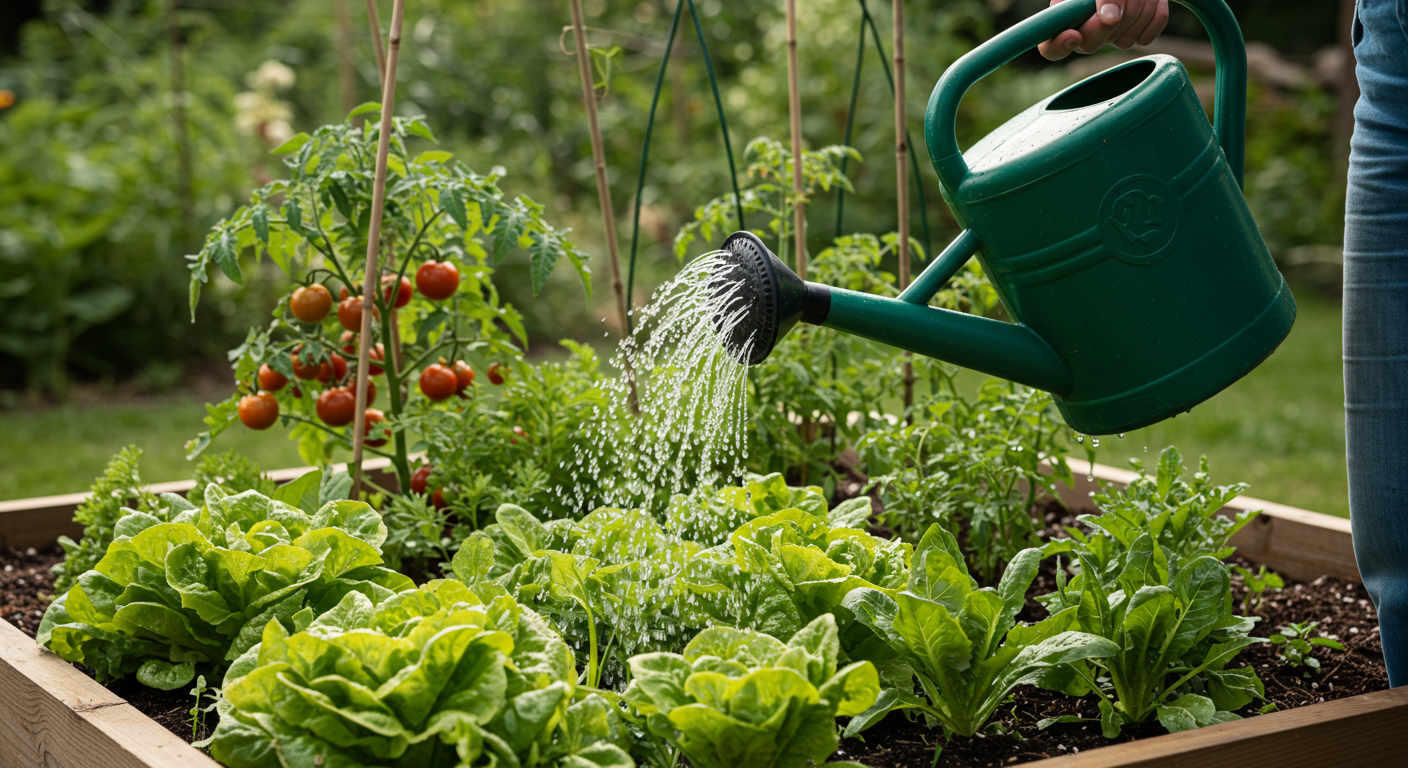
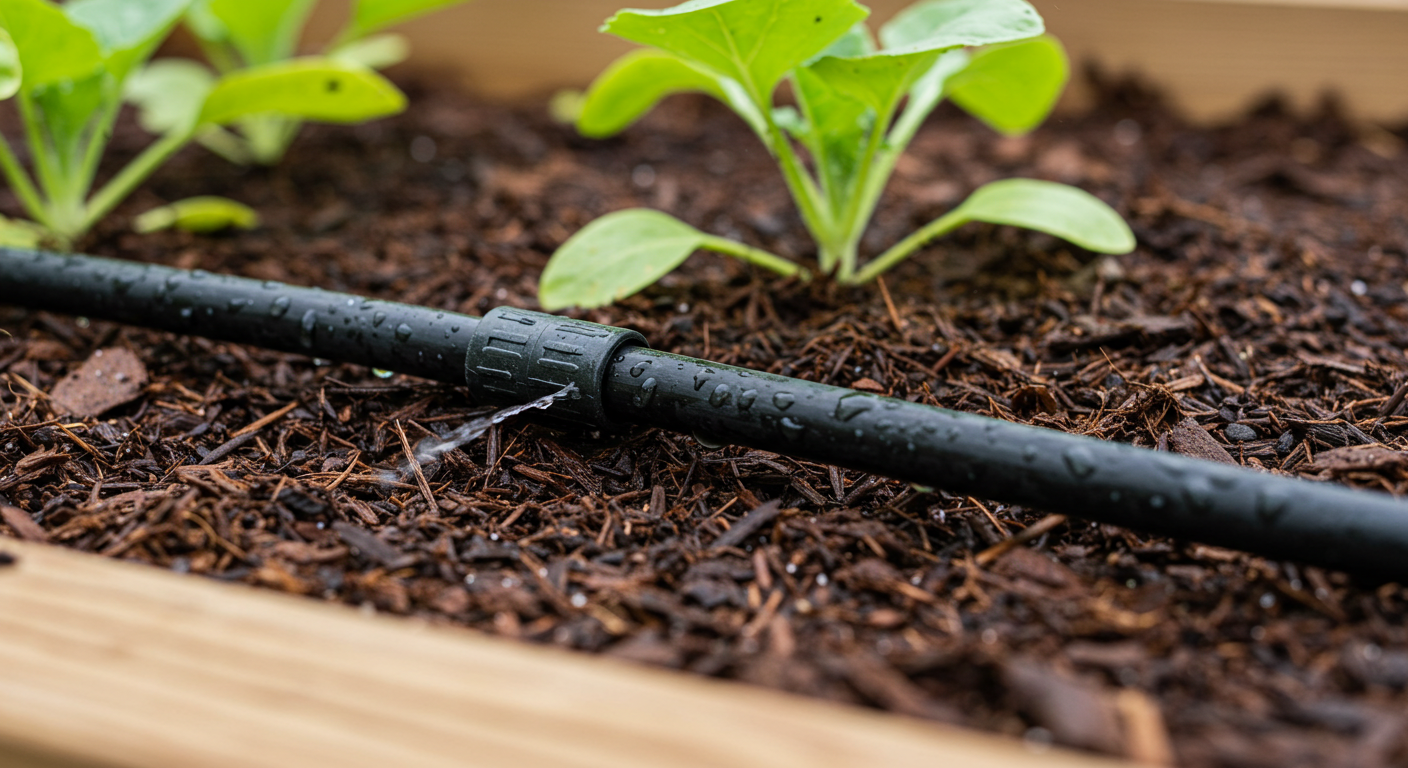
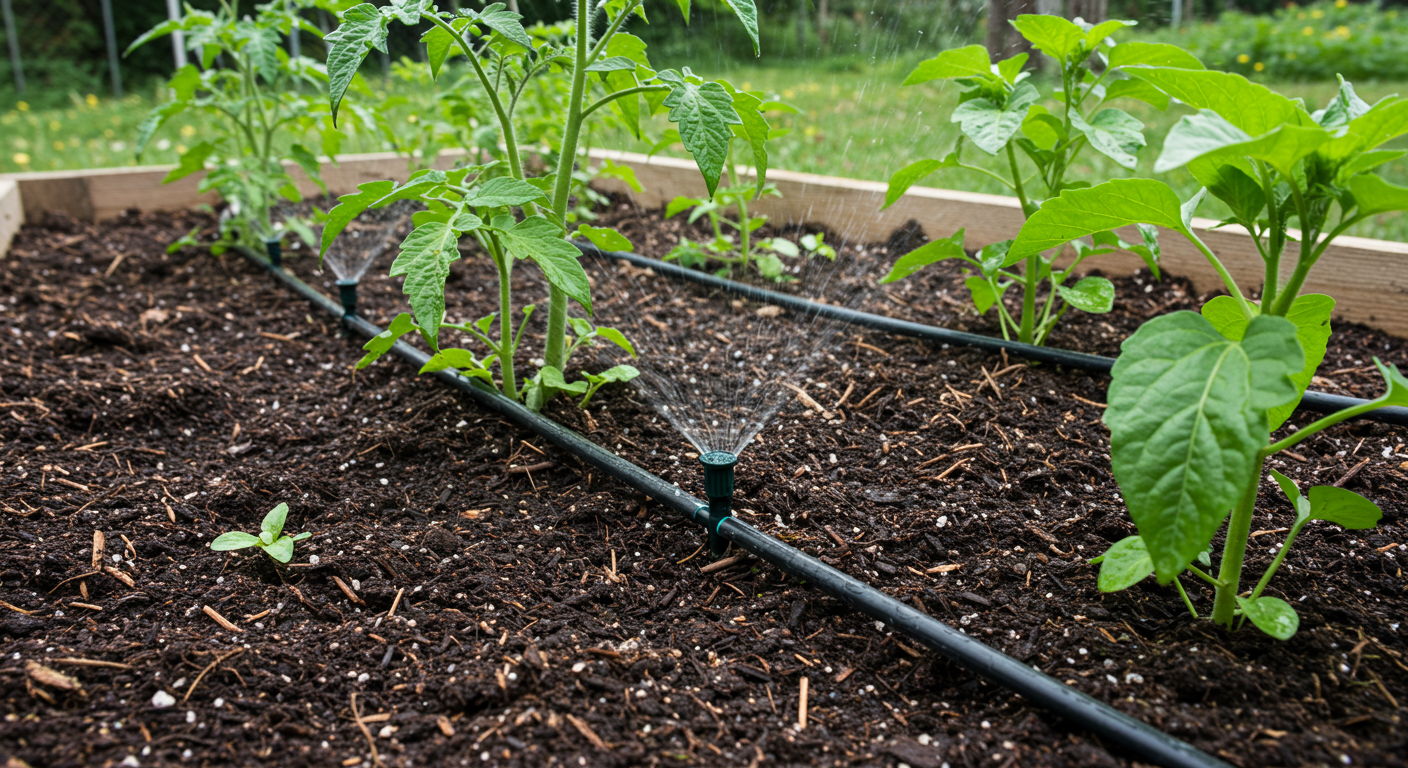
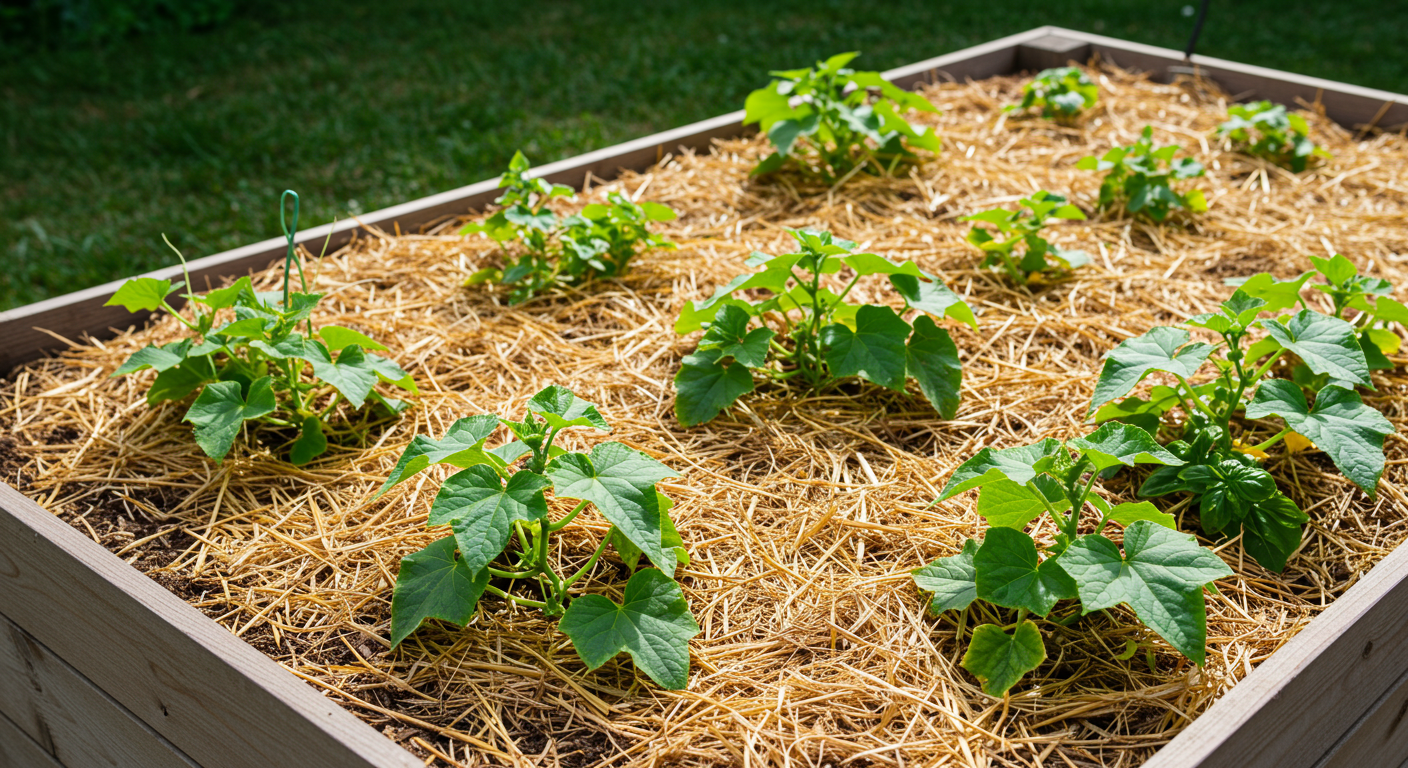
👉 Learn more about drip irrigation benefits from the USDA National Resources Conservation Service.
Timing matters just as much as method:
💡 Golden Rule: Water deeply and less frequently—this encourages strong root growth.
❌ Overwatering – Drowns roots and washes away nutrients.
❌ Shallow watering – Keeps roots near the surface, making plants weak.
❌ Irregular watering – Causes stress, blossom end rot, and cracked fruits (especially in tomatoes).
❌ Spraying leaves – Leads to mildew, fungus, and pest problems.
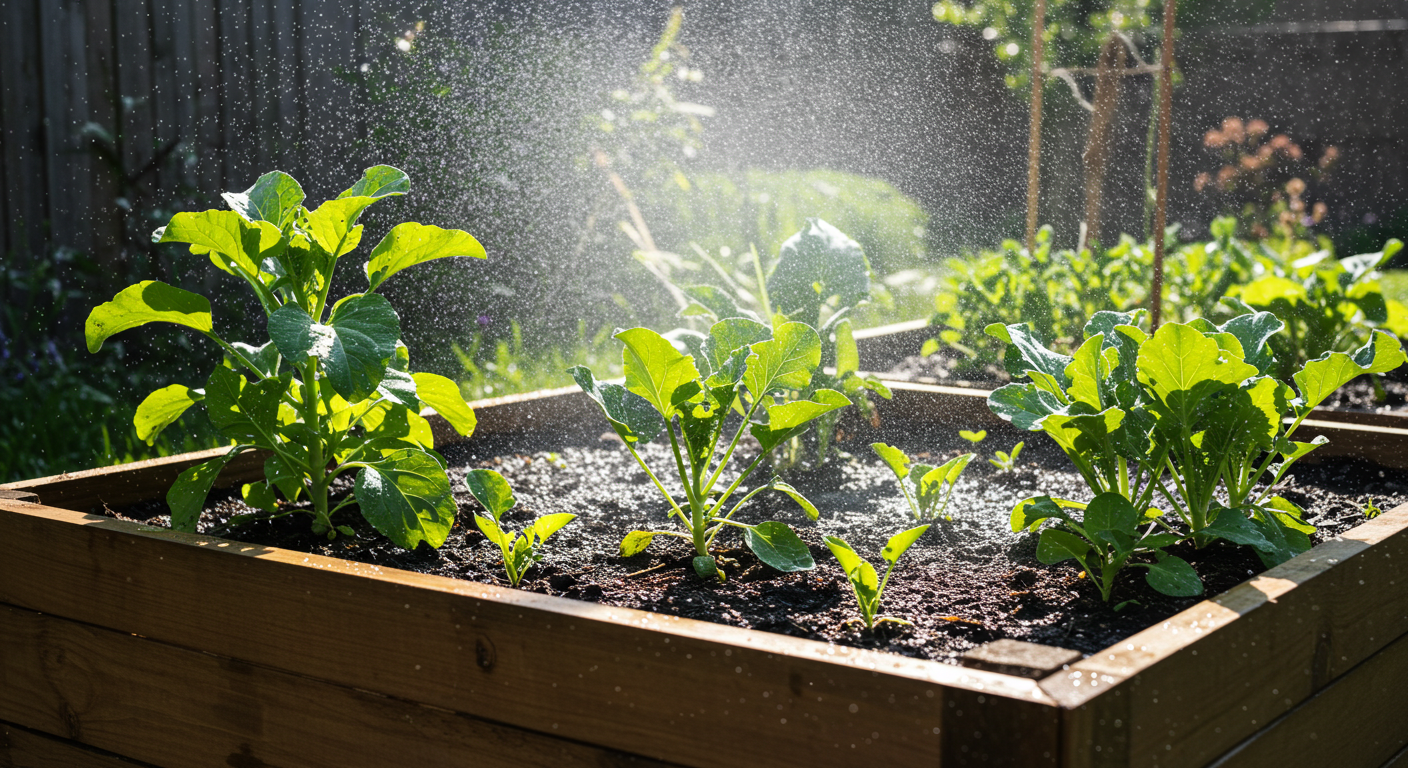
DIY Hand Watering
Automated Drip/Soaker Systems
👉 If you’re serious about year-round gardening, installing drip irrigation in raised beds is one of the best investments you can make.
Typically once a day in hot weather, every 2–3 days in cooler conditions.
Yes—drip systems save time and ensure even moisture, even in small setups.
Yes. Although raised beds drain faster, constant soggy soil causes root rot.
Yes. Mulch can cut water loss by 25–50%.
Rainwater is ideal, but tap water works fine if left to sit overnight (to reduce chlorine).
Water is the lifeblood of your raised bed garden. Unlike traditional gardens, raised beds dry out quickly and need consistent, deep watering. Whether you choose hand watering, soaker hoses, or a drip irrigation system, the goal is the same: deliver moisture to plant roots without waste.
By pairing smart watering techniques with mulching, seasonal adjustments, and proper soil care, your raised bed garden will flourish with healthy, productive plants all year long.
👉 Want expert help setting up and maintaining your garden? Green to Gorgeous specializes in creating beautiful, sustainable landscapes that thrive.
Let’s Build
Contact us todayGet daily tips and tricks for making your best home.
2025 Green to Gorgeous